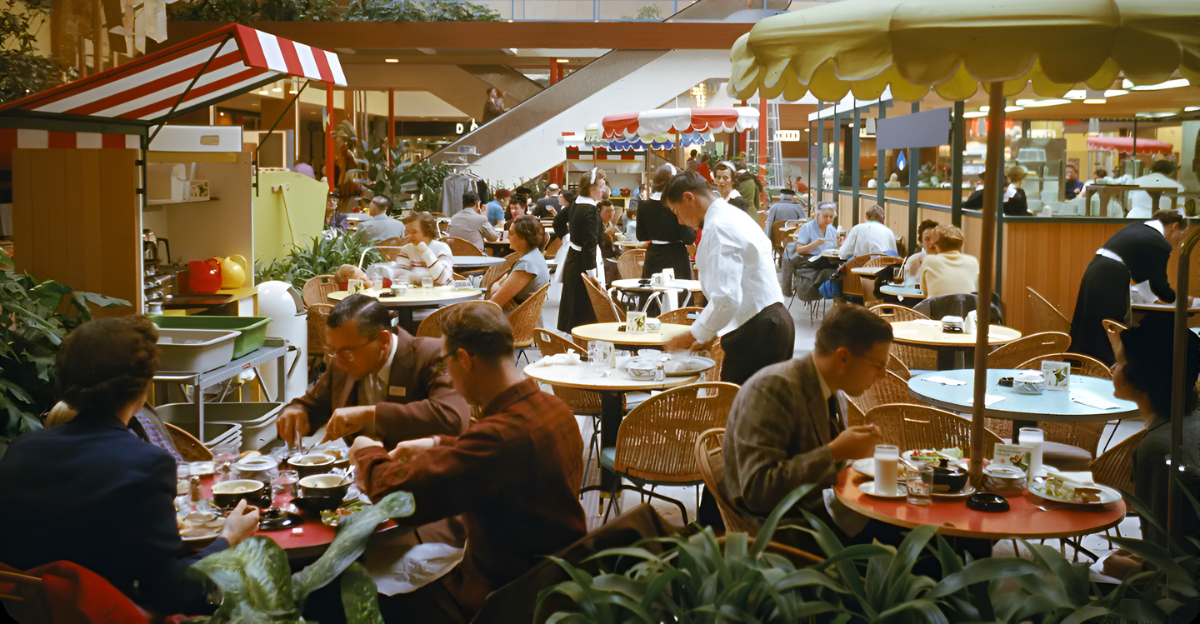
The 20th century ushered in a revolution in retail with the rise of stores that went far beyond just selling merchandise; they molded American life, anchored communities, and shaped pop culture.
These vanished titans ranged from department store palaces to friendly neighborhood video rental shops, each offering unique experiences and product selections that children of the era still remember today, even as these stores have faded from the landscape.
The Early Discount Giants
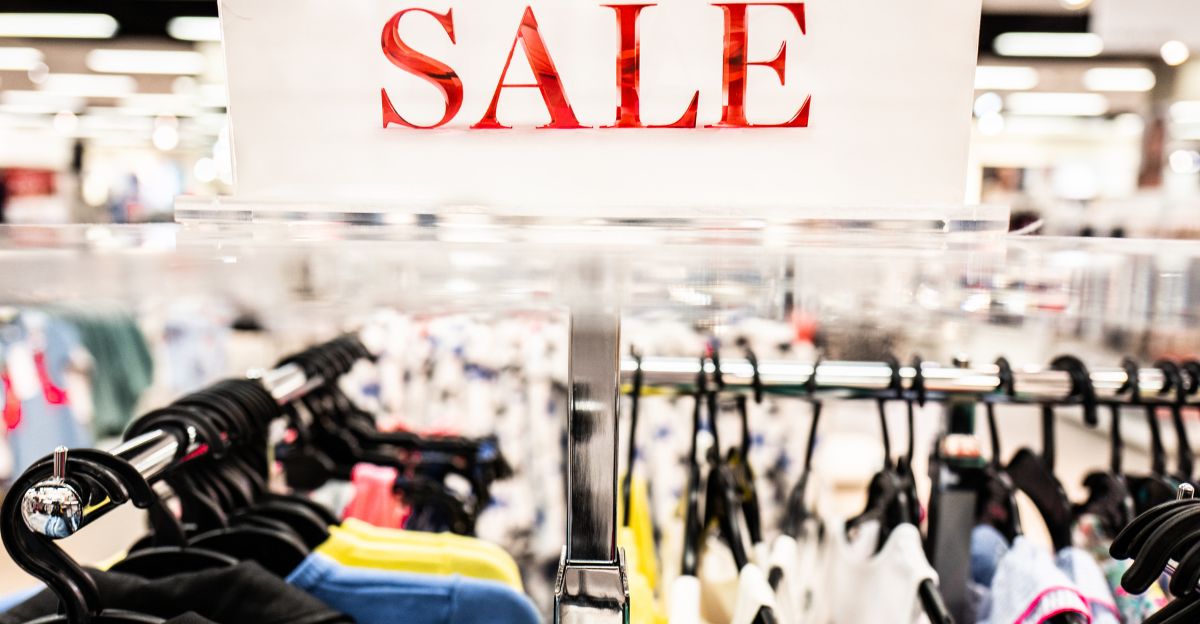
Discount retailers like Ames and Builders Square were lifelines for middle-income families, offering everything from apparel and home goods to basic groceries at a low price.
Ames, founded in 1958, peaked at over 700 stores and was especially popular in the Northeast. However, it succumbed to fierce competition from Walmart and Target, mounting debt from acquiring Hills Department Stores, and bankruptcy, closing its last 327 stores in 2002 after years of declining sales.
Builders Square, a home improvement chain, was one of the first warehouse-style DIY outlets. However, it fell to rapidly expanding rivals like Home Depot and Lowe’s and was shuttered by the late 1990s. As Sam Walton, the Founder of Walmart, stated, “The small stores were just destined to disappear, at least in the numbers they once existed, because the customers drive the whole thing.”
Mall Fashion Stores Fade
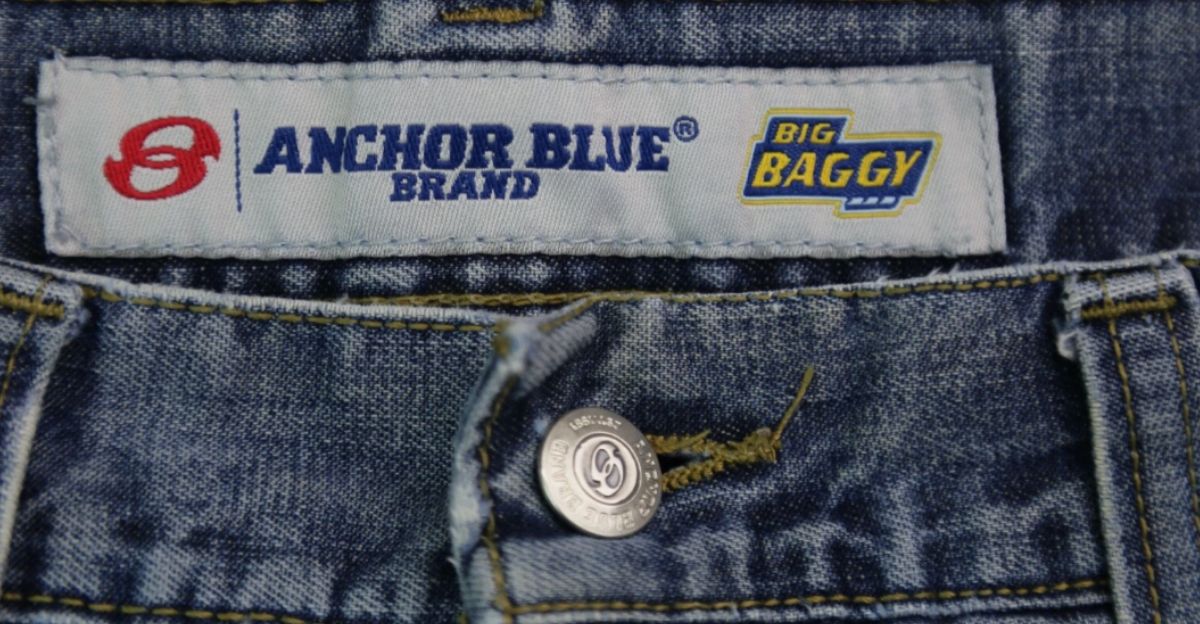
The mall era in the ’80s and ’90s was defined by clothing stores like Anchor Blue, beloved for its denim; Delia’s, which also ran a famous clothing catalog for teenage girls; and Dressbarn, which was founded in 1962 for working women and grew to 650 stores before closing in 2019.
Dressbarn closed after its parent company, Ascena, found it “not operating at an acceptable profitability in today’s retail environment” and failed to attract younger shoppers or compete with fast-fashion rivals like H&M and Target.
Holly Habeck, Retail Industry CEO, said, “The combination of these costs, alongside the changing consumer preferences towards online shopping, has made the traditional retail model untenable.”
The Fall of Video Rentals

Picking a Friday-night movie was once a family ritual thanks to Blockbuster, Hollywood, and Family Video. At its peak, Blockbuster had over 9,000 locations and offered new releases, video games, and snacks.
It failed to adapt to digital disruption from Netflix and Redbox, amassed heavy debt, lost key revenue when it eliminated late fees, and closed its final corporate-owned store in 2014.
Hollywood Video, once Blockbuster’s chief rival, filed for bankruptcy in 2010, and Family Video lasted until 2021. Thanks to their rural locations, Hollywood Video outlived both but ultimately succumbed to streaming.
Big-Box Electronics Bust
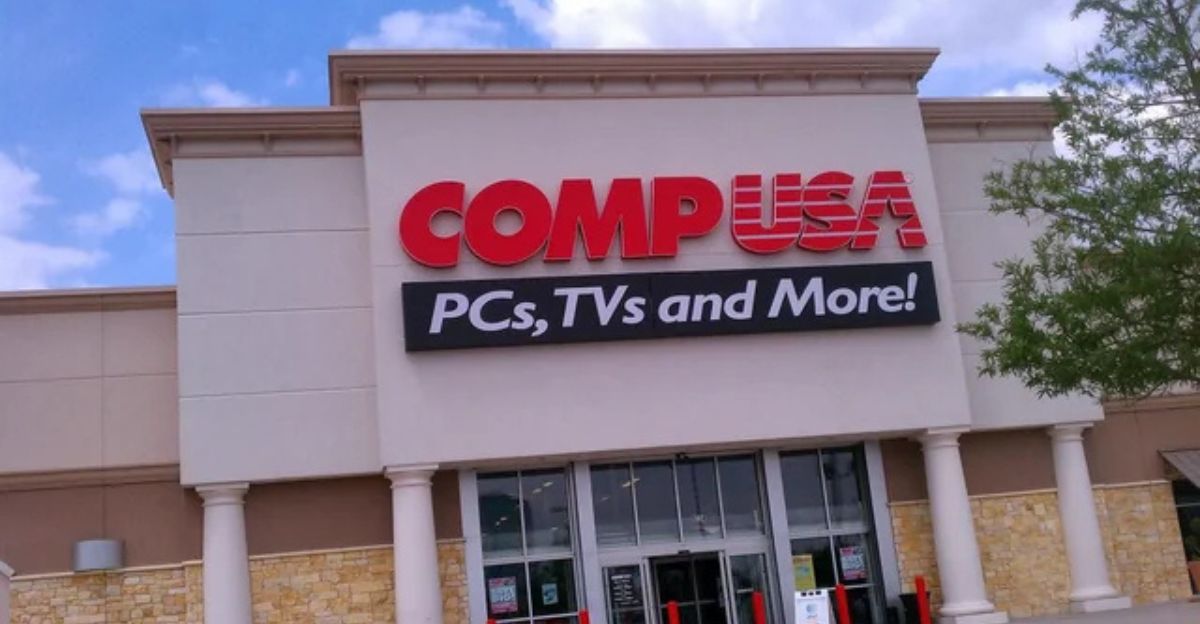
Consumers in the market for TVs, stereos, and even car stereos flocked to Circuit City, CompUSA, and Crazy Eddie. Circuit City was founded in 1949 and peaked at over 500 stores nationwide, but closed in 2009 after failed attempts to restructure, poorly timed layoffs of experienced staff, and the rise of Best Buy and Amazon.
CompUSA specialized in computers and peripherals, fell behind in the online tech race, and closed its last stores in 2012.
Crazy Eddie, famous for its frenetic ads and “insane” discounts, collapsed due to fraud, overexpansion, and changing consumer tastes.
Music Empires Gone Silent

A music lover’s paradise existed at Sam Goody, Tower Records, and Virgin Megastores. These stores brought record shopping alive with vast selections and passionate staff.
Record sales declined as downloading and streaming took over. Tower Records, for example, could not keep up, closing in 2006 after a debt crisis and industry-wide collapse in CD sales; FYE absorbed Sam Goody, while Virgin Megastores shuttered after 2009 amid a shift toward online music.
Ib Reman, E-commerce executive, said: “This trend has been amplified by the COVID-19 pandemic, which hastened the shift towards digital shopping experiences.”
Loss of Toy Superstores
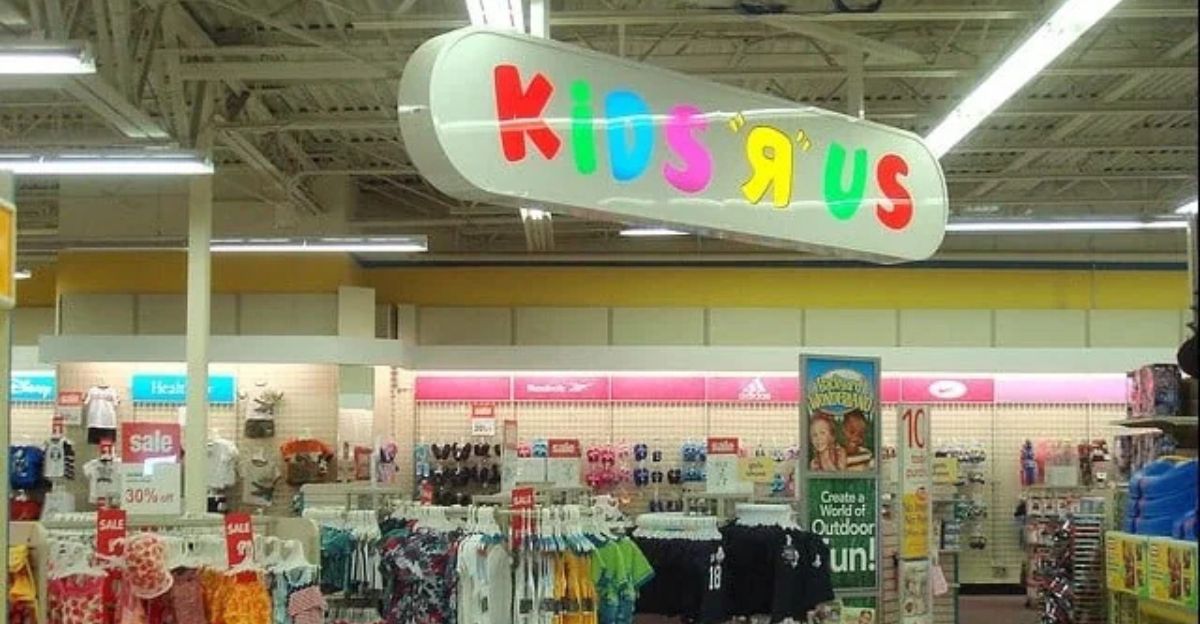
KB Toys was once the number two toy seller in the US after Toys “R” Us, with over 1,300 stores at its 1999 peak.
Known for sales, action figures, puzzles, and seasonal pop-ups, it filed Chapter 11 twice in the 2000s and closed all stores in 2009, squeezed by Walmart, Target, and e-commerce.
Kids’ R’ Us and boutique shops like Noodle Kidoodle and Zany Brainy made toy shopping an event, but they have disappeared due to competition and changing trends.
Sporting Goods Revolution
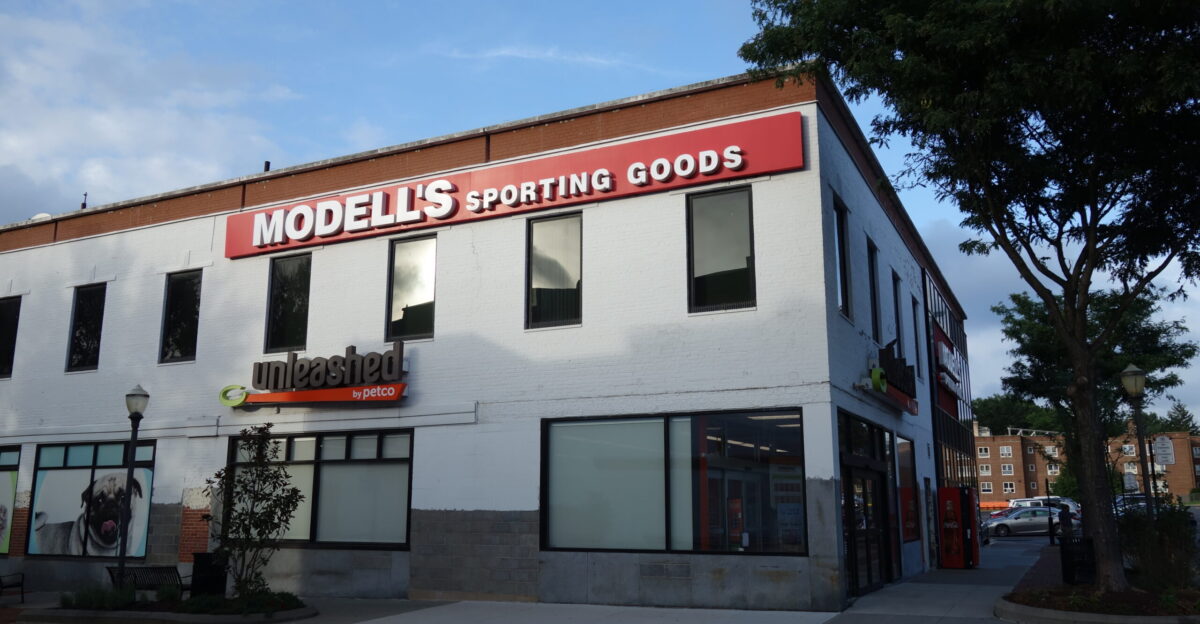
G companies like Modell’s Sporting Goods, Sports Authority, and Golfsmith enabled active lifestyles.
Sports Authority was founded in 1987 as a warehouse-style superstore, grew to 463 stores, but suffered from overwhelming debt, poor e-commerce adaptation, and intense competition from Dick’s Sporting Goods, closing all locations in August 2016, which led to 14,500 job losses.
Modell’s (founded in 1889) and Golfsmith fell due to consolidation, changing sports participation, and the Amazon effect.
Department Store Legends
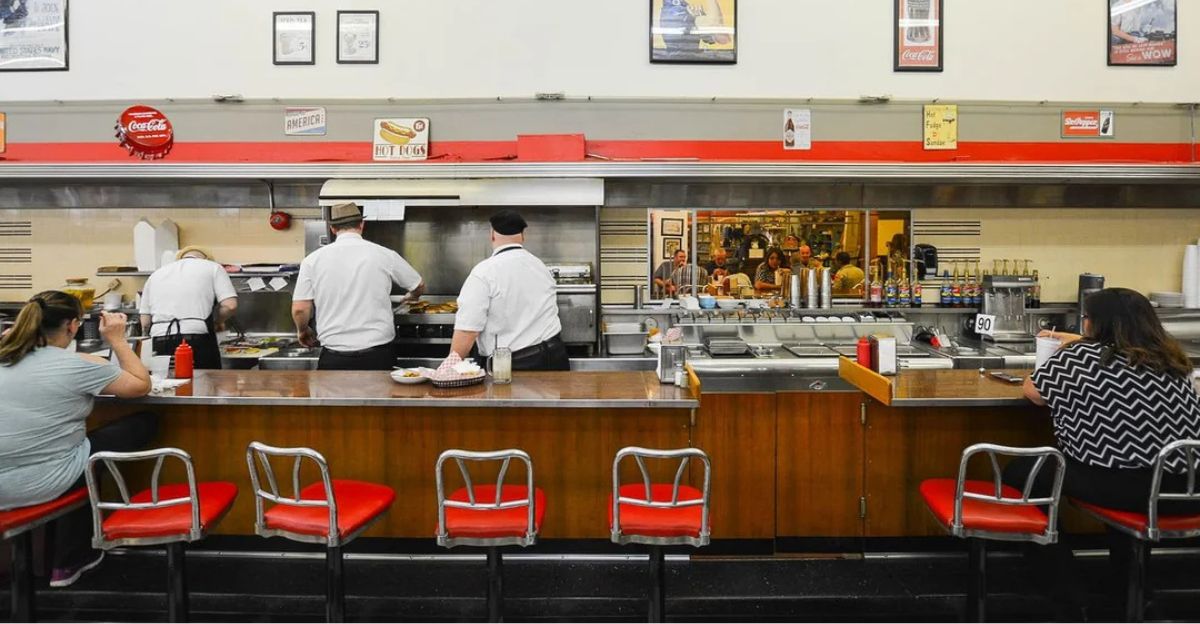
The department store boom of the last century left icons like Hudson’s, Marshall Field’s, Kaufmann’s, Woolworth’s, Gottschalks, and Mervyn’s.
These stores offered everything from clothing and jewelry to home goods, toys, and diners under one roof, hosting generations of family shopping trips. Service cutbacks, mall decline, and national consolidation led to each chain’s end.
Woolworth’s, the inventor of the “five-and-dime,” sold off its last US stores in 1997 after 118 years in business, done in by discounters and changing consumer tastes.
Home Goods Havens Disappear
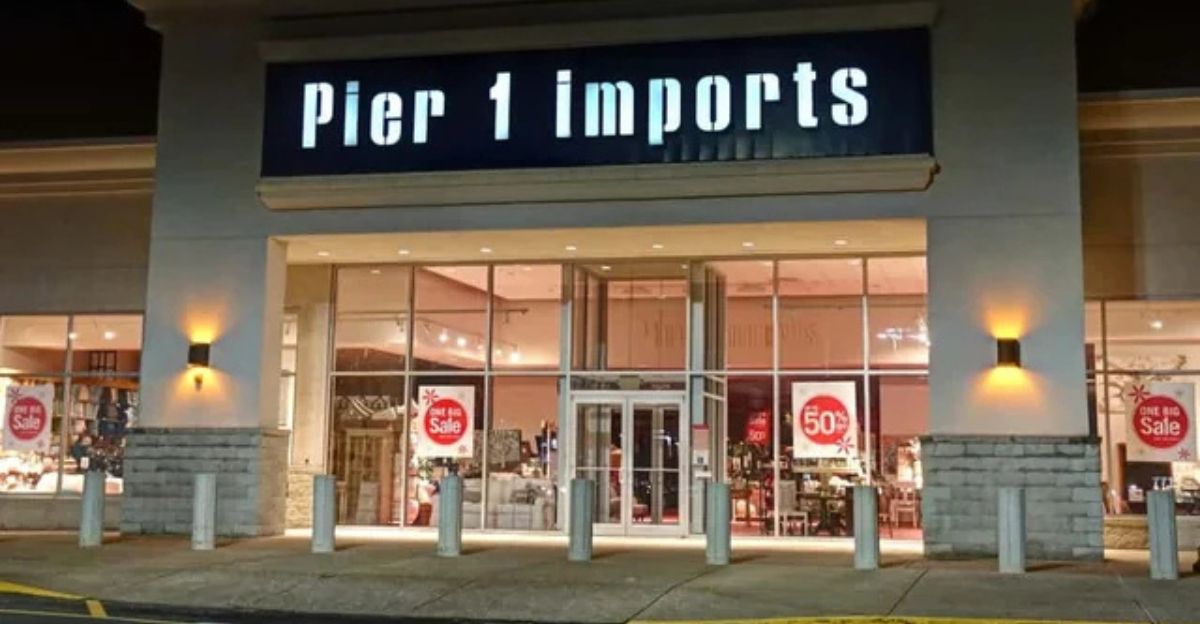
Decorators and homemakers flocked to Linens’ n Things, which opened in 1975 and offered bedding, towels, and cookware. The chain closed in 2008 due to bankruptcy triggered by the economic recession and competition with Bed Bath & Beyond.
Frank’s Nursery & Crafts, a leading garden center and craft store, peaked at over 250 stores but was liquidated in 2004. Pier 1 Imports, known for imported and eclectic home décor, shut its doors in 2020 as COVID and digital shopping upended its market.
Wickes Furniture specialized in contemporary and value-priced furniture before closing in 2008.
Supermarket Survivors No Longer
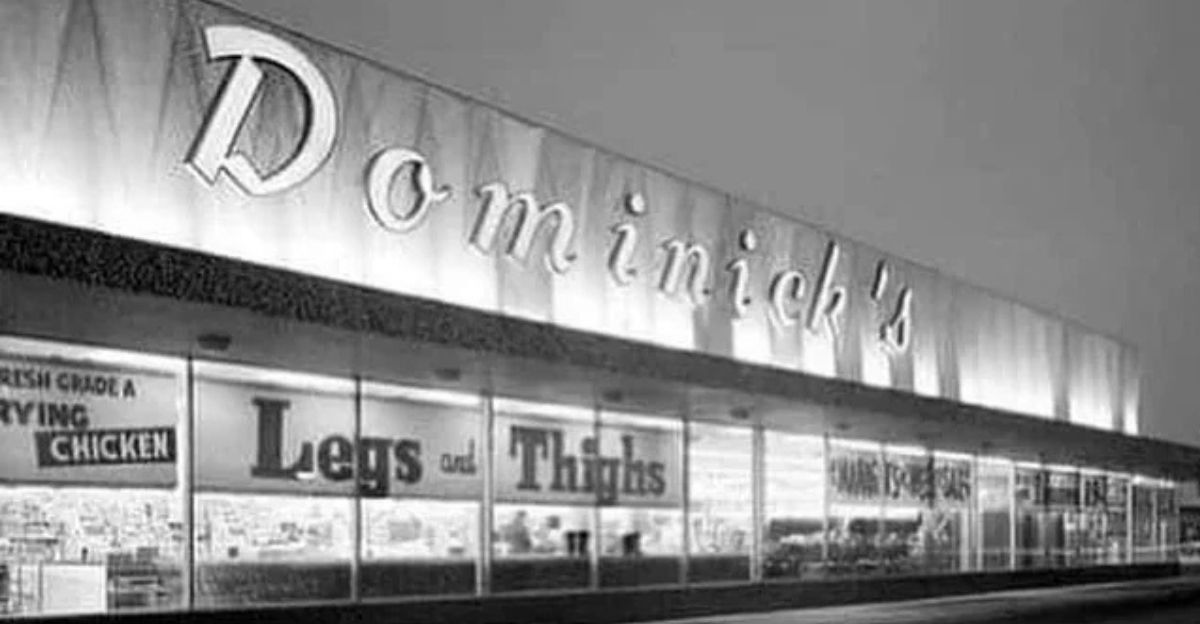
Regional grocery leaders like BI-LO in the Southeast and Dominick’s in Chicago provided fresh produce, meat counters, and local selection.
Both suffered after large grocers squeezed margins; Dominick’s closed in 2013 after parent company Safeway opted to exit the competitive Chicago market, while BI-LO (est. 1961) finished liquidating stores in 2021.
Footwear for the Whole Family
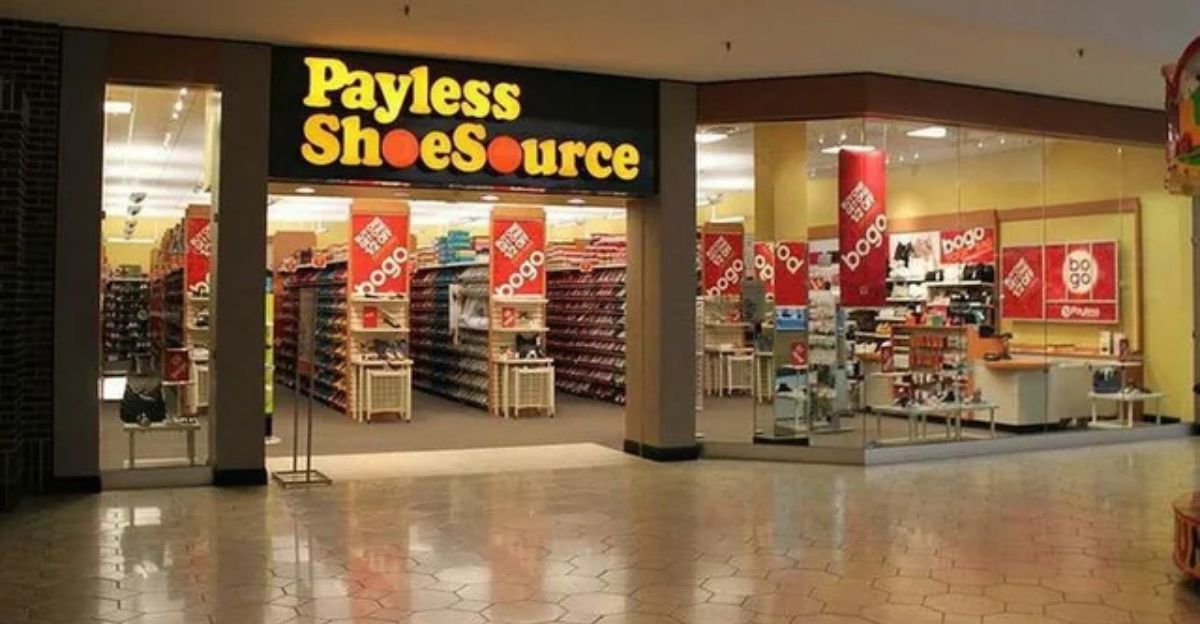
Many families found affordable footwear at chains like Thom McAn, a classic shoe line from 1922 that lasted until 1992 as a national chain, and Just for Feet, famous for its megastores with basketball courts, before declaring bankruptcy in 1999.
Payless ShoeSource was a go-to for budget shoes for over 60 years, peaking at 4,000 locations before closing all remaining stores in 2019 after tough losses to online competitors and failing turnaround efforts.
Glamour and Glitz

Looking for affordable jewelry and fashionable women’s apparel? Friedman’s jewelry stores were common in malls before the company filed for bankruptcy in 2008.
The Limited was groundbreaking in the 1970s-1990s, offering stylish outfits for young, working women.
However, it couldn’t keep up with faster fashion cycles and online competition, closing its stores in 2017.
Consumers’ Book Havens
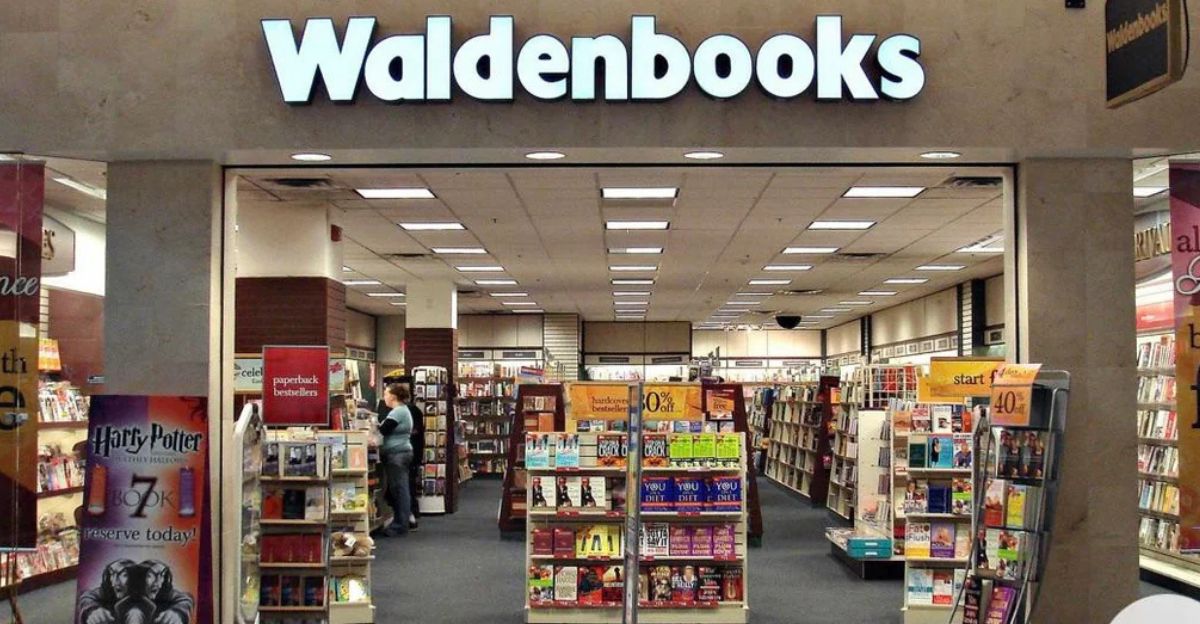
Browsing and buying books happened at Borders, Waldenbooks, and Crown Books, where knowledgeable staff and frequent author events provided a sanctuary for readers.
Borders closed in 2011 after Amazon’s growth and e-readers like Kindle eroded sales; Waldenbooks and Crown Books were also squeezed out as malls and print book sales declined.
Child-Friendly Shopping
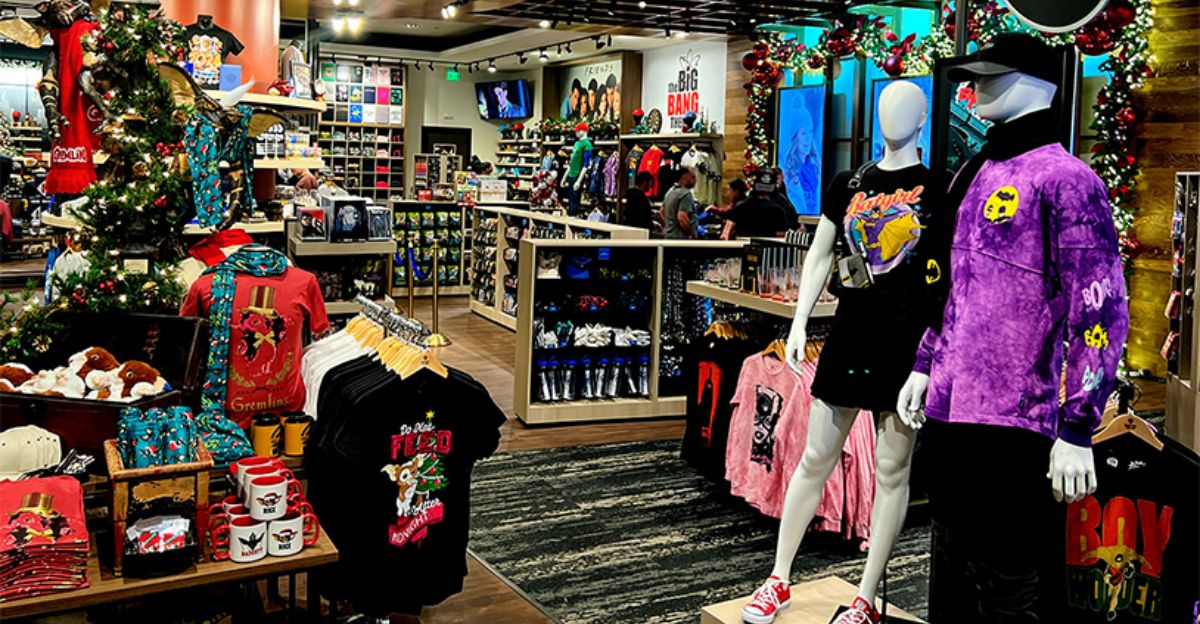
For kids and their families, shopping was more than finding items: Kids ‘R’ Us, a Toys “R” Us spin-off, focused on children’s clothing and gear until closing in 2003.
The Warner Bros. Studio Store brought cartoons and movies to life with themed gear, yet when Warner’s parent company shifted focus in 2001, these unique retail spaces disappeared.
Iconic Specialty Stores
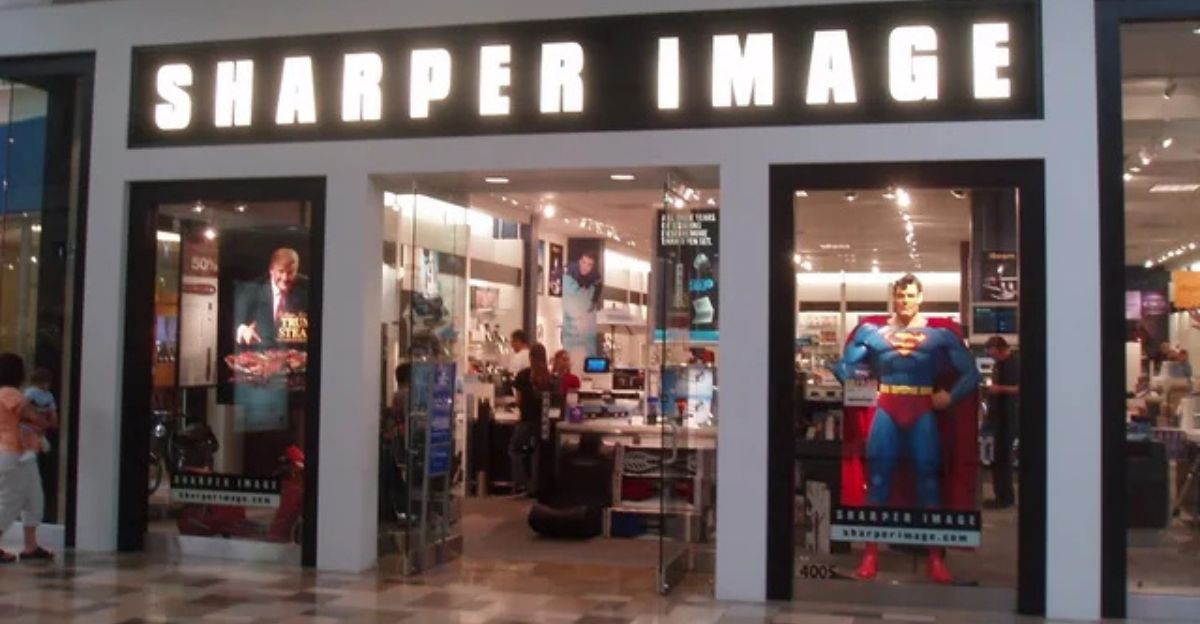
Gadget lovers and techies headed to Sharper Image for massagers, air purifiers, and quirky electronics, until the 2008 recession and changing tastes closed most stores.
Tweeter catered to high-end audiovisual enthusiasts before it dissolved in 2007. Both companies were victims of big-box electronics and e-commerce growth.
Automotive Store Demise

Western Auto, founded in 1909, became one of the nation’s largest auto parts retailers, selling bikes and hardware.
Once a common sight on American Main Streets, it exited retail by 2003 after owner changes and competition from specialized big-box auto chains.
Casual Clothing Chains Crumble
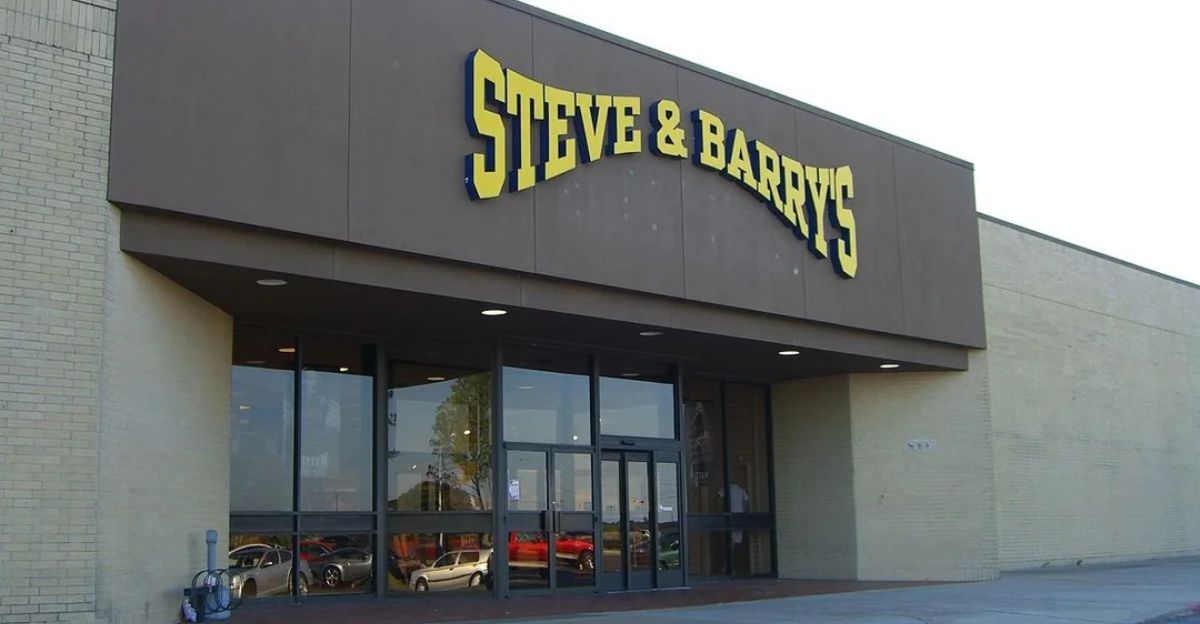
Clothing trends change fast, and few resellers can keep up. Merry-Go-Round specialized in youth fashion in malls before the company dissolved in 1996 after aggressive expansion.
Steve & Barry’s sold low-priced collegiate and athletic apparel, opening hundreds of stores in just a few years before being forced to liquidate in 2009 due to the economic crash and rapid overexpansion.
Bookstore Chains Take a Bow
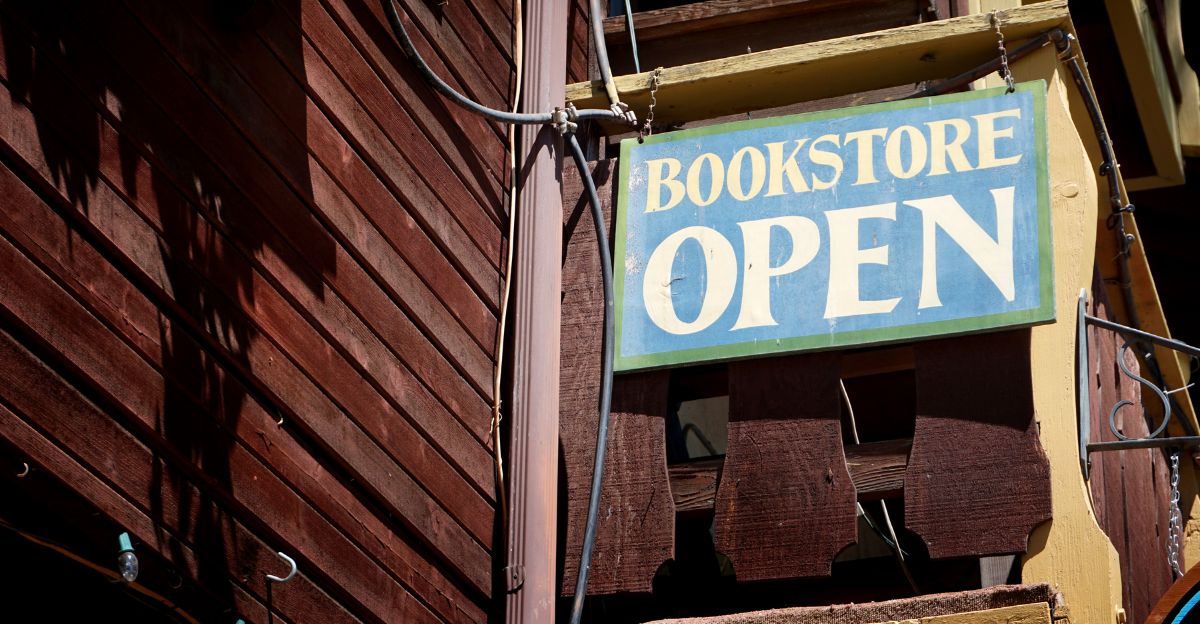
The familiar experience of browsing at Waldenbooks, Borders, and Crown Books ended as e-books, Amazon, and big-box stores outpaced them.
Specialty selections and knowledgeable staff couldn’t save them from the seismic shift in publishing and media consumption.
Wikipedia “Retail Apocalypse” quoted various industry analysts: “American consumers have shifted their purchasing habits due to various factors, including experience spending versus material goods and homes, casual fashion in relaxed dress codes, as well as the rise of e-commerce and particularly juggernaut companies such as Amazon.com and Walmart.”
Remembering Retail’s Golden Age

Names like Ames, Woolworth’s, and Blockbuster conjure memories of discovery, excitement, and family togetherness that shaped mid- to late 20th-century life.
Although these 50 iconic retail chains no longer line the streets or anchor malls, their influence and nostalgia remain reminders of an era when shopping was an experience, not just an errand.